
The Untamed Beauty of Low Tatras National Park
Discover the pristine landscapes and thrilling outdoor adventures of Low Tatras National Park, Slovakia's hidden gem for nature lovers and adventure enthusiasts.
Nestled in the heart of Slovakia, Low Tatras National Park is a haven for nature enthusiasts and adventure seekers alike. Stretching across 1,102 square kilometers, the park is a picturesque landscape of dense forests, rolling meadows, and rugged mountain peaks. The park is home to some of Slovakia's most iconic wildlife, including brown bears, lynxes, and golden eagles, offering visitors a rare glimpse into the country's natural heritage. The Low Tatras are not just about breathtaking views; they also offer a myriad of outdoor activities. In the winter, the park transforms into a snowy wonderland perfect for skiing and snowboarding. The Jasná resort, located within the park, is one of the best ski destinations in Central Europe. Summer months, on the other hand, are ideal for hiking, mountain biking, and exploring the park's extensive cave systems, such as the Demänovská Cave of Liberty and the Bystrianska Cave. For a more relaxed experience, visitors can enjoy the traditional Slovak hospitality in the charming villages surrounding the park. Here, you can taste local delicacies, soak in thermal baths, and learn about the rich cultural traditions of the region. Whether you're an adrenaline junkie or someone looking to unwind in nature, Low Tatras National Park offers something for everyone.
Local tips in Low Tatras National Park
- Visit during the shoulder seasons (May-June, September-October) for fewer crowds and milder weather.
- Pack appropriate gear for changing weather conditions, as mountain weather can be unpredictable.
- Consider hiring a local guide for hiking trails to learn more about the park's flora and fauna.
- Don't miss the local cuisine; try traditional Slovak dishes like bryndzové halušky (potato dumplings with sheep cheese).
- Check the park's website for any restricted areas to ensure the protection of wildlife and habitats.
The Untamed Beauty of Low Tatras National Park
Nestled in the heart of Slovakia, Low Tatras National Park is a haven for nature enthusiasts and adventure seekers alike. Stretching across 1,102 square kilometers, the park is a picturesque landscape of dense forests, rolling meadows, and rugged mountain peaks. The park is home to some of Slovakia's most iconic wildlife, including brown bears, lynxes, and golden eagles, offering visitors a rare glimpse into the country's natural heritage. The Low Tatras are not just about breathtaking views; they also offer a myriad of outdoor activities. In the winter, the park transforms into a snowy wonderland perfect for skiing and snowboarding. The Jasná resort, located within the park, is one of the best ski destinations in Central Europe. Summer months, on the other hand, are ideal for hiking, mountain biking, and exploring the park's extensive cave systems, such as the Demänovská Cave of Liberty and the Bystrianska Cave. For a more relaxed experience, visitors can enjoy the traditional Slovak hospitality in the charming villages surrounding the park. Here, you can taste local delicacies, soak in thermal baths, and learn about the rich cultural traditions of the region. Whether you're an adrenaline junkie or someone looking to unwind in nature, Low Tatras National Park offers something for everyone.
When is the best time to go to Low Tatras National Park?
Unmissable attractions to see
Jasna Low Tatras
Discover the breathtaking beauty and exhilarating adventures that await you at Jasna Low Tatras, Slovakia's premier ski resort.

Park MINI SLOVENSKO
Discover Slovakia's heritage in miniature at Park MINI SLOVENSKO, showcasing iconic landmarks in a stunning natural setting.

Cave of Liberty
Explore the mesmerizing Cave of Liberty in Slovakia, a natural wonder filled with stunning geological formations and rich history.

Stanišovská Cave
Experience the breathtaking beauty of Stanišovská Cave in Slovakia, where nature's artistry comes alive in stunning underground formations.

Vrbické pleso
Explore the tranquil beauty of Vrbické Pleso, an enchanting alpine lake in Slovakia's Demänovská Dolina, perfect for nature lovers and outdoor enthusiasts.

Symbolický cintorín Jasná - Ostredok
Explore Symbolický cintorín Jasná - Ostredok, a serene memorial park in Nízké Tatry, blending nature's beauty with poignant tributes.

Archeopark LIPTOVIA
Explore the rich history and culture of Slovakia at Archeopark LIPTOVIA, a unique open-air museum with immersive exhibits and stunning natural beauty.

Náučný chodník Príbeh vody Demänovská dolina
Explore the captivating Water Story Trail in Demänovská Dolina, where nature and education intertwine for an unforgettable adventure.
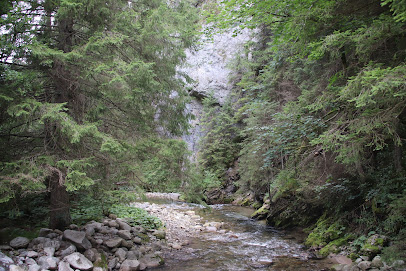
Jasná pod Chopkom
Explore the stunning hiking trails and breathtaking landscapes of Jasná pod Chopkom in Slovakia’s Low Tatras, a must-visit destination for nature lovers.

Vodopád vo Vajskovskej doline
Explore the breathtaking Vodopád vo Vajskovskej Doline, a hidden waterfall gem in Slovakia's stunning Vajskovska Valley, perfect for nature lovers and adventurers.

Jasna Ski Resort - P1
Experience the thrill of winter sports at Jasna Ski Resort, where stunning landscapes and diverse slopes create an unforgettable adventure.

Ostredok
Discover the breathtaking beauty of Ostredok in Demänovská Dolina – a hiker's paradise filled with stunning landscapes and diverse wildlife.

Bencúrova veža
Discover the stunning trails and breathtaking views at Bencúrova veža in Demänovská Dolina, a hiker's paradise in the heart of Slovakia.

Náučný turistický chodník Žiarce
Explore the stunning natural beauty and educational wonders of Náučný Turistický Chodník Žiarce in the heart of Pavčina Lehota.
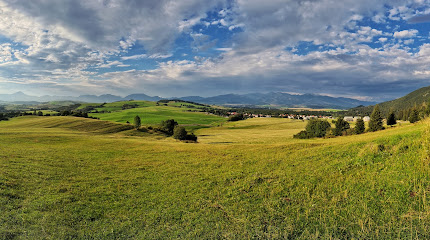
Náučný chodník k Demänovskej jaskyni slobody
Explore the Demänovský Cave Trail, a scenic journey through Slovakia's breathtaking landscapes leading to the stunning Demänovská Cave of Liberty.
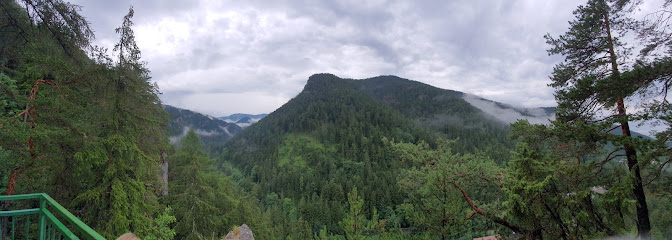
Essential places to dine
Koliba Bystrina
Discover the heart of Slovakian cuisine at Koliba Bystrina in Demänovská Dolina – where tradition meets flavor in a stunning mountain setting.

KOLIBA TRI STUDNIČKY u Tomášovcov
Experience the essence of Slovakian culture with traditional cuisine and lively music at Koliba Tri Studničky in Demänovská Dolina.

Ostredok by Iglobrothers
Experience authentic Slovak cuisine with breathtaking views at Ostredok by Iglobrothers in Demänovská Dolina.

Restaurant HABARKA
Discover culinary excellence in Demänovská Dolina at Restaurant HABARKA - where local flavors meet breathtaking mountain views.

Restaurant 3 domky
Experience authentic Slovak cuisine at Restaurant 3 domky in Demänovská Dolina – a culinary gem surrounded by stunning natural beauty.
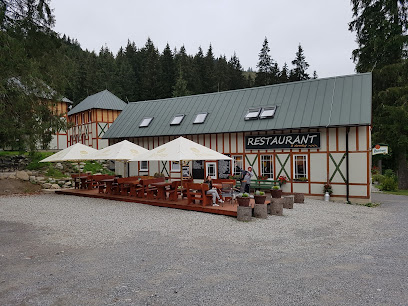
U Sura
Discover authentic Slovak cuisine and unique souvenirs at U Sura in Demänovská Dolina - A must-visit culinary gem.

Restaurant Koska
Experience authentic Slovak cuisine amidst stunning mountain views at Restaurant Koska in Horná Lehota.

VON ROLL Restaurant
Experience exquisite dining at VON ROLL Restaurant in Demänovská Dolina - where gourmet meets tradition amidst stunning mountain views.

Tálska Bašta
Discover the flavors of Slovakia at Tálska Bašta - a premier restaurant blending exquisite cuisine with breathtaking nature.

Chata Koliesko
Discover Chata Koliesko: A delightful restaurant in Demänovská Dolina serving authentic Slovak cuisine amidst stunning mountain scenery.

Reštaurácia Slovenská koliba
Experience authentic Slovak flavors in a cozy setting surrounded by breathtaking nature at Reštaurácia Slovenská koliba.

ROTUNDA RESTAURANT
Experience authentic Slovak cuisine amidst the breathtaking beauty of Demänovská Dolina at Rotunda Restaurant.

Reštaurácia Hotel Björnson
Experience authentic Slovak cuisine in the heart of Demänovská Dolina at Reštaurácia Hotel Björnson - where taste meets stunning mountain views.

Beer & Wine Point
Experience culinary excellence at Beer & Wine Point in Demänovská Dolina – where every meal is paired with breathtaking mountain views.
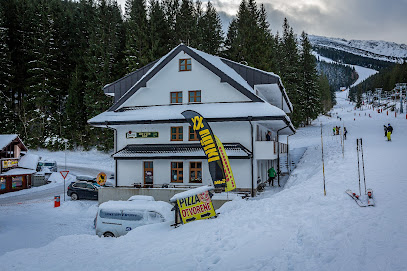
Ľudová reštaurácia na svahu Biela Púť
Discover the flavors of Slovakia at Ľudová reštaurácia na svahu Biela Púť, where authentic cuisine meets breathtaking mountain views.

Markets, malls and hidden boutiques
Shopping Centrum Nicolaus TATRASPOL SLOVAKIA, s.r.o.
Discover a shopping haven in Liptovský Mikuláš at Shopping Centrum Nicolaus, where retail therapy meets local culture and delicious cuisine.
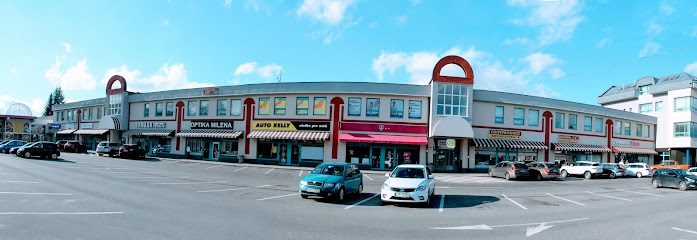
KRIVÁŇ - predajňa s tradičnými slovenskými špecialitami
Explore the heart of Slovak cuisine at KRIVÁŇ, your go-to destination for traditional delicacies, artisanal cheeses, and exquisite wines in Liptovský Mikuláš.

OUTLET Demänová
Discover unbeatable deals on premium sportswear at OUTLET Demänová in Liptovský Mikuláš, the perfect pit stop for outdoor enthusiasts.

Ski Rental Tatry Motion
Discover the ultimate skiing experience at Ski Rental Tatry Motion in Demänovská Dolina, where quality gear meets expert service for unforgettable winter adventures.

Slovryb - chov a predaj rýb
Explore Slovryb in Demänovská Dolina for fresh fish and authentic Slovak culinary delights amidst stunning natural beauty.

Bartek Miloš
Explore the slopes of Demänovská Dolina with top-quality gear from Bartek Miloš, your trusted ski shop for all winter sports needs.
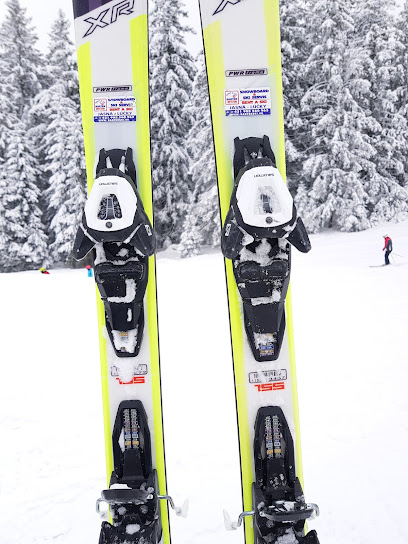
U Báčika
Explore U Báčika, the perfect gift shop and internet store for unique local crafts and authentic souvenirs in a welcoming atmosphere.

VEVERICA ŠPORT, s.r.o.
Explore the best in skiing gear and accessories at Veverica Šport, located in the scenic Demänovská Dolina, your ultimate ski destination.

W H I T E D O G . sk
Explore a charming gift shop in Liptovský Mikuláš, offering handcrafted treasures and local artistry at W H I T E D O G . sk.
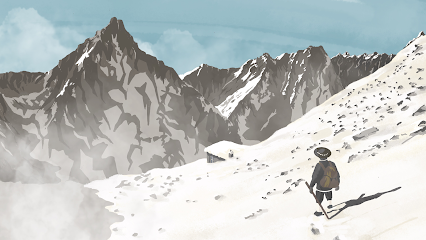
BOHOSTYLE
Explore BOHOSTYLE for unique gifts and handcrafted furniture that embody local artistry and creativity, perfect for tourists seeking memorable souvenirs.

Luky Presents - Darčekový obchod
Explore unique souvenirs and local crafts at Luky Presents in Liptovský Mikuláš, capturing the essence of Slovakia in every gift.

Hi Tatras Shop
Explore Hi Tatras Shop for unique Slovak souvenirs that celebrate the beauty of the Tatras, perfect for memorable keepsakes from your travels.

Suveníry
Discover the essence of Slovakia at Suveníry, a charming souvenir store in Liptovský Ján - kúpele offering authentic local crafts and delights.

Slovakia - Eliášová Zlata
Experience the essence of Slovakia at Eliášová Zlata, where unique handcrafted gifts and local treasures await every visitor.

háčkujeme pletieme či štirkujeme, e-shop vlna, priadza
Explore a charming notions store in Brezno-Mazorníkovo, offering quality yarns and crafting supplies for knitting and crochet enthusiasts.

Essential bars & hidden hideouts
Jasná Mountain food
Experience the flavors of Slovakia at Jasná Mountain food, a bar set against breathtaking mountain scenery in Demänovská Dolina.

CRYSTAL BAR
Discover the inviting Crystal Bar in Demänovská Dolina, a perfect blend of refreshing drinks and stunning mountain views.

Kolotočovo
Experience authentic Slovak hospitality at Kolotočovo, a lively pub in Liptovský Mikuláš, offering hearty meals and a great selection of local beverages.

Bar Fakt! - Bar and pizzeria.
Discover Bar Fakt! in Demänovská Dolina - A delightful pizzeria and bar offering delicious food and refreshing drinks amidst stunning mountain views.
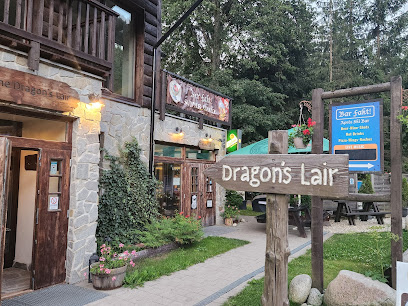
Pub Under The Bubble
Discover the cozy atmosphere and local flavors at Pub Under The Bubble in Demänovská Dolina, a perfect retreat for travelers.

Retro MUSIC PUB
Discover the lively spirit of Liptovský Mikuláš at Retro MUSIC PUB, a vibrant bar featuring cold beers, great music, and a welcoming atmosphere.

Beer & Wine Point
Explore local flavors at Beer & Wine Point in Demänovská Dolina, where exquisite brews meet stunning mountain views.

TATRALINE BAR & COFFEE
Discover the local charm and vibrant atmosphere at TATRALINE BAR & COFFEE in Liptovský Mikuláš, your cozy retreat for drinks and relaxation.

SNOWBEER sport bar, restaurant, bowling (Damian Jasna Hotel Resort & Residencies sro.)
Discover the perfect blend of dining and recreation at SNOWBEER Sport Bar in Demänovská Dolina, where delicious meals meet lively bowling fun.

Bar Apreski
Discover the charm of Bar Apreski in Horná Lehota, the perfect bar for relaxation after your mountain adventures.

Ploštínsky Hostinec - OKO
Experience authentic Slovak hospitality at Ploštínsky Hostinec - OKO, a cozy bar in Liptovský Mikuláš offering local delicacies and refreshing drinks.

Energy bar Chopok
Discover Energy Bar Chopok - your perfect fast-food haven in the heart of Demänovská Dolina, ideal for fueling your adventures.
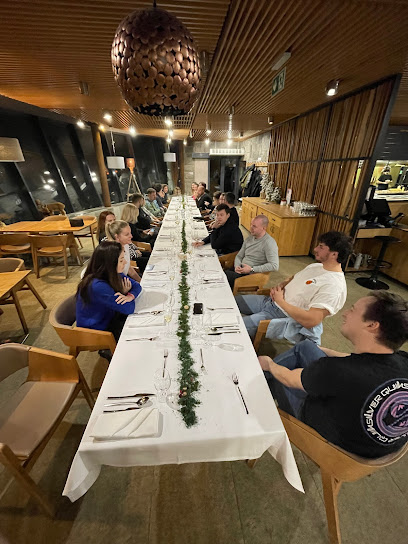
Jis Bar
Discover the charm of Jis Bar in Demänovská Dolina - a perfect spot for relaxation with stunning mountain views and refreshing drinks.

Garage Pub
Experience local culture at Garage Pub in Horná Lehota, a cozy bar offering a selection of drinks and a welcoming atmosphere amid stunning Slovak landscapes.

Von Roll Lukova
Discover the cozy charm of Von Roll Lukova, where refreshing drinks and stunning views meet in the heart of Demänovská Dolina.

Local Phrases about Low Tatras National Park
-
- HelloAhoj
[ahoy] - GoodbyeDovidenia
[doh-vee-deh-nyah] - YesÁno
[ah-no] - NoNie
[nye] - Please/You're welcomeProsím
[pro-seem] - Thank youĎakujem
[dyah-koo-yem] - Excuse me/SorryPrepáčte
[preh-pahch-teh] - How are you?Ako sa máte?
[ah-ko sah mah-teh] - Fine. And you?Dobre. A vy?
[doh-bre. ah vee] - Do you speak English?Hovoríte po anglicky?
[hoh-voh-ree-teh poh ahn-gleet-skee] - I don't understandNerozumiem
[neh-roh-zoo-myem]
- HelloAhoj
-
- I'd like to see the menu, pleaseChcel by som vidieť jedálny lístok, prosím
[khe-tsel bee som vee-dyet yeh-dahl-nee lees-tok pro-seem] - I don't eat meatNejem mäso
[neh-yem mah-so] - Cheers!Na zdravie!
[nah zdrah-vee-eh] - I would like to pay, pleaseChcel by som zaplatiť, prosím
[khe-tsel bee som zah-pla-teet pro-seem]
- I'd like to see the menu, pleaseChcel by som vidieť jedálny lístok, prosím
-
- Help!Pomoc!
[poh-mohts] - Go away!Choď preč!
[khohd prech] - Call the Police!Zavolaj políciu!
[zah-voh-lahy po-lee-tsyoo] - Call a doctor!Zavolaj lekára!
[zah-voh-lahy leh-kah-rah] - I'm lostStratil som sa
[strah-teel som sah] - I'm illSom chorý
[som khor-y]
- Help!Pomoc!
-
- I'd like to buy...Chcel by som kúpiť...
[khe-tsel bee som koo-peeht] - I'm just lookingLen sa pozerám
[len sah poh-zeh-rahm] - How much is it?Koľko to stojí?
[kohl-koh toh stoh-yee] - That's too expensiveTo je príliš drahé
[toh yeh pree-leesh dra-heh] - Can you lower the price?Dokážete znížiť cenu?
[doh-kah-zeh-teh znee-zheet tseh-noo]
- I'd like to buy...Chcel by som kúpiť...
-
- What time is it?Koľko je hodín?
[kohl-koh yeh hoh-deen] - It's one o'clockJe jedna hodina
[yeh yehd-nah hoh-dee-nah] - Half past (10)Polovica desiatej
[poh-lo-vee-tsah deh-shya-teh] - MorningRáno
[rah-noh] - AfternoonPopoludnie
[poh-poh-loohd-nyeh] - EveningVečer
[veh-chehr] - YesterdayVčera
[v-cheh-rah] - TodayDnes
[dnes] - TomorrowZajtra
[zai-trah] - 1Jedna
[yehd-nah] - 2Dva
[dvah] - 3Tri
[tree] - 4Štyri
[shteer-ee] - 5Päť
[pyat] - 6Šesť
[shest] - 7Sedem
[seh-dem] - 8Osem
[oh-sehm] - 9Deväť
[deh-vyat] - 10Desať
[deh-saht]
- What time is it?Koľko je hodín?
-
- Where's a/the...?Kde je ...?
[kdeh yeh] - What's the address?Aká je adresa?
[ah-kah yeh ah-dreh-sah] - Can you show me (on the map)?Môžete mi to ukázať (na mape)?
[moh-zheh-teh mee toh oo-kah-zat nah mah-peh] - When's the next (bus)?Kedy je ďalší (autobus)?
[keh-dy yeh dyal-shee oh-toh-boos] - A ticket (to ....)Lístok (do ...)
[lees-tohk doh]
- Where's a/the...?Kde je ...?
History of Low Tatras National Park
-
The Low Tatras mountain range was formed millions of years ago during the Alpine orogeny, a geological process that created many of Europe's mountain chains. The range is primarily composed of granite and gneiss, with a limestone and dolomite cover. This geological diversity has contributed to the unique landscape and rich biodiversity of the Low Tatras National Park.
-
Archaeological findings suggest that the Low Tatras region was inhabited by humans as far back as the Neolithic period. The area provided early settlers with abundant natural resources, including game, fresh water, and materials for tools and shelter. Evidence of early human activities, such as pottery and stone tools, has been discovered in various caves and rock shelters throughout the park.
-
During the Middle Ages, the Low Tatras region became an important center for mining, particularly for precious metals like gold and silver. The town of Brezno, situated near the park, was a significant mining hub. The remnants of medieval mining operations, including old shafts and tunnels, can still be found in the area. This period of intense mining activity significantly influenced the local economy and culture.
-
Shepherding has a long tradition in the Low Tatras, dating back to the 15th century. The pastoral lifestyle, characterized by seasonal movements of livestock between summer and winter pastures, shaped the cultural landscape of the region. Traditional wooden shepherd huts known as 'salas' are scattered across the park, offering a glimpse into the pastoral heritage of the area.
-
The rugged terrain of the Low Tatras provided a natural refuge for partisans during World War II. The Slovak National Uprising in 1944 saw significant guerrilla activities in the region as resistance fighters used the mountains for shelter and strategic advantage. Memorials and plaques throughout the park commemorate the bravery and sacrifices of those who fought against the occupying forces.
-
The Low Tatras National Park (NAPANT) was officially established in 1978 to protect the unique natural and cultural heritage of the region. Covering an area of 728 square kilometers, it is the largest national park in Slovakia. The park aims to preserve the diverse ecosystems, rare flora and fauna, and historical landmarks while promoting sustainable tourism and environmental education.
Low Tatras National Park Essentials
-
Low Tatras National Park is located in central Slovakia. The nearest international airports are in Bratislava and Košice. From Bratislava, you can take a direct train to Liptovský Mikuláš, which is a gateway to the park. The journey typically takes around 3-4 hours by train. From Košice, you can take a train to Poprad and then a connecting train to Liptovský Mikuláš. Additionally, buses and car rentals are available from major Slovak cities.
-
Within Low Tatras National Park, transportation options include public buses, taxis, and rental cars. Public buses connect key towns and villages around the park. Taxis are relatively affordable and can be hailed or booked in advance. Renting a car offers the flexibility to explore the park at your own pace. For adventurers, cycling is also a viable option, with several well-marked biking trails available.
-
The official currency in Slovakia is the Euro (EUR). Credit cards are widely accepted in hotels, restaurants, and shops in the larger towns around the park. However, it is advisable to carry some cash, especially for use in smaller villages and rural areas. ATMs are available in towns like Liptovský Mikuláš and Brezno, so withdrawing cash beforehand is a good idea.
-
Low Tatras National Park is generally a safe destination for tourists. Standard precautions should be taken, such as avoiding leaving valuables unattended and being cautious in crowded areas. While there are no specific high-crime areas targeting tourists, it is always best to stay vigilant. Wildlife encounters can also occur, so it is important to follow park guidelines and stay on designated trails.
-
In case of emergency, dial 112 for immediate assistance. This number connects you to emergency services, including police, fire, and medical help. It is recommended to have travel insurance that covers medical emergencies. For minor health issues, there are pharmacies in towns such as Liptovský Mikuláš. Always inform someone about your hiking plans and expected return time.
-
Fashion: Do dress in layers and wear sturdy hiking boots for outdoor activities. Avoid wearing flip-flops or open-toed shoes on trails. Religion: Do respect local customs and traditions, especially when visiting churches or historical sites. Public Transport: Do validate your bus or train ticket before boarding. Don't speak loudly on public transport. Greetings: Do greet people with a friendly 'Dobrý deň' (Good day). Eating & Drinking: Do try the local cuisine, including bryndzové halušky (potato dumplings with sheep cheese). Don't refuse food or drink offerings, as it may be considered impolite.
-
To experience Low Tatras National Park like a local, visit during the off-peak seasons of spring and autumn for fewer crowds and beautiful scenery. Engage with locals in small villages; they are often friendly and willing to share insights about their traditions and culture. Take advantage of local guides for a more in-depth understanding of the park's natural and historical significance. Don't miss visiting hidden gems like the Demänovská Cave of Liberty and the Mýto pod Ďumbierom village.
Nearby Cities to Low Tatras National Park
-
Things To Do in Martin
-
Things To Do in Žilina
-
Things To Do in Zakopane
-
Things To Do in Poprad
-
Things To Do in Trenčín
-
Things To Do in Salgotarjan
-
Things To Do in Bielsko-Biala
-
Things To Do in Vac
-
Things To Do in Ostrava
-
Things To Do in Trnava
-
Things To Do in Eger
-
Things To Do in Krakow
-
Things To Do in Miskolc
-
Things To Do in Prešov
-
Things To Do in Košice








